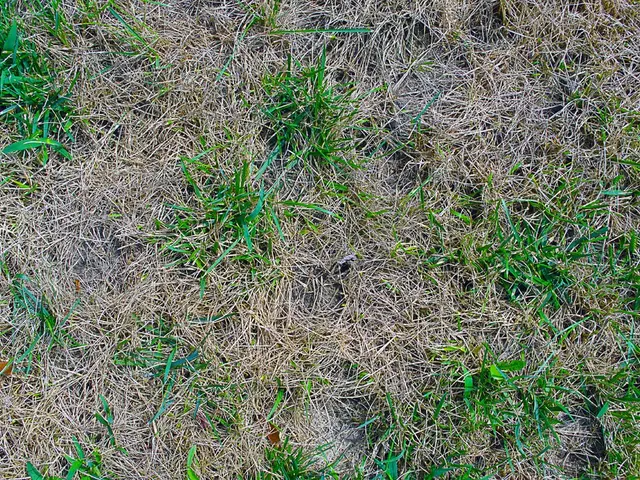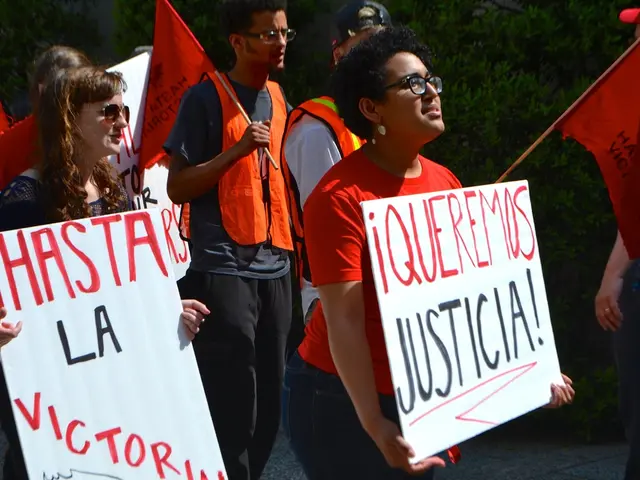Setting up 5 connections with cyclovia in Tlalpan (establishing five cyclovia links in Tlalpan)
Cycling through the heart of Mexico City: A 36km bike lane revamp ahead of the 2026 World Cup
Get ready to hit the pedals, Mexico City! The government is working hard to revamp a whopping 36 kilometers of bike lanes along Calzada de Tlalpan. This massive project aims to boost the use of bicycles as a means of transportation by 20-30%, according to Héctor Ulises García Nieto, the city's Secretary of Mobility.
The brand-new bike lane, spanning both directions from Renato Leduc to Tlaxcoaque, will connect with five key circuits. Here's a lowdown on these circuits:
- Lorenzo Boturini, boasting a 6.9-kilometer bike lane, will cross Calzada México Tacuba–Circuito Interior Melchor Ocampo.
- Eje 5 and Eje 6, totaling 6.4 kilometers, connect with Calzada de la Viga and Eje Central Lázaro Cárdenas.
- The Miguel Ángel de Quevedo-Calzada Taxqueña bike lane runs for 5 kilometers across avenue Pacífico-Cerro del Cubilete, and División del Norte of Circuito Interior-Calzada Acoxpa.
- Calzada Acoxpa, covering 6.8 kilometers, runs through Tlalpan-Periférico.
- Ponciano Arriaga with a 5-kilometer route from Plaza de la República-avenida Hidalgo.
With an estimated 500,000 daily trips made by bicycle, the addition of these lanes is expected to create a significant increase in the number of bike trips. "[T]he Tlalpan bike lane can generate an incentive to use this cycling infrastructure," explains Héctor Ulises, "and we are thinking that with these 80 kilometers more, we can seek at least between 20% and 30% of daily trips by bicycle."
However, there are concerns from cyclists and experts about the safety and functionality of the intersection points. Areli Carreón, founder of Bicitekas, highlights the importance of "intervening" the streets and creating support infrastructure to effectively reduce speeds and ensure safe passage for cyclists. Currently, the government has yet to consult with experts and the public regarding this ambitious project.
On the brighter side, cyclists like Melissa and Armando see the project as a terrific step towards encouraging the use of bicycles for short trips. As long as the bikeways remain well-defined and protected from invasions by street vendors or vehicles, the project is set to be a major success.
So, gear up, Mexico City residents! The city is clearing the way for cyclists like never before, and it's time to hop on and ride!
📣❗️Our channel is now on WhatsApp! Stay updated on the latest news, opinion pieces, entertainment, trends, and more by adding our number to your contacts.
- To complement the new bike lane, the government should consider addressing safety and functionality concerns at intersection points, as advised by cycling experts like Areli Carreón.
- In addition to boosting bicycle transportation by 20-30%, the revamped bike lanes in Mexico City may also foster lifestyle changes, with more residents using bicycles for their daily commutes, following examples from cyclists like Melissa and Armando.
- With the revamp of over 80 kilometers of bike lanes, news about Mexico City's commitment to sustainable transportation and a focus on urban cycling is sure to catch the attention of travelers and cycling enthusiasts, adding to the city's rich tapestry of food-and-drink, lifestyle, fashion-and-beauty, home-and-garden, travel, and sports experiences.








